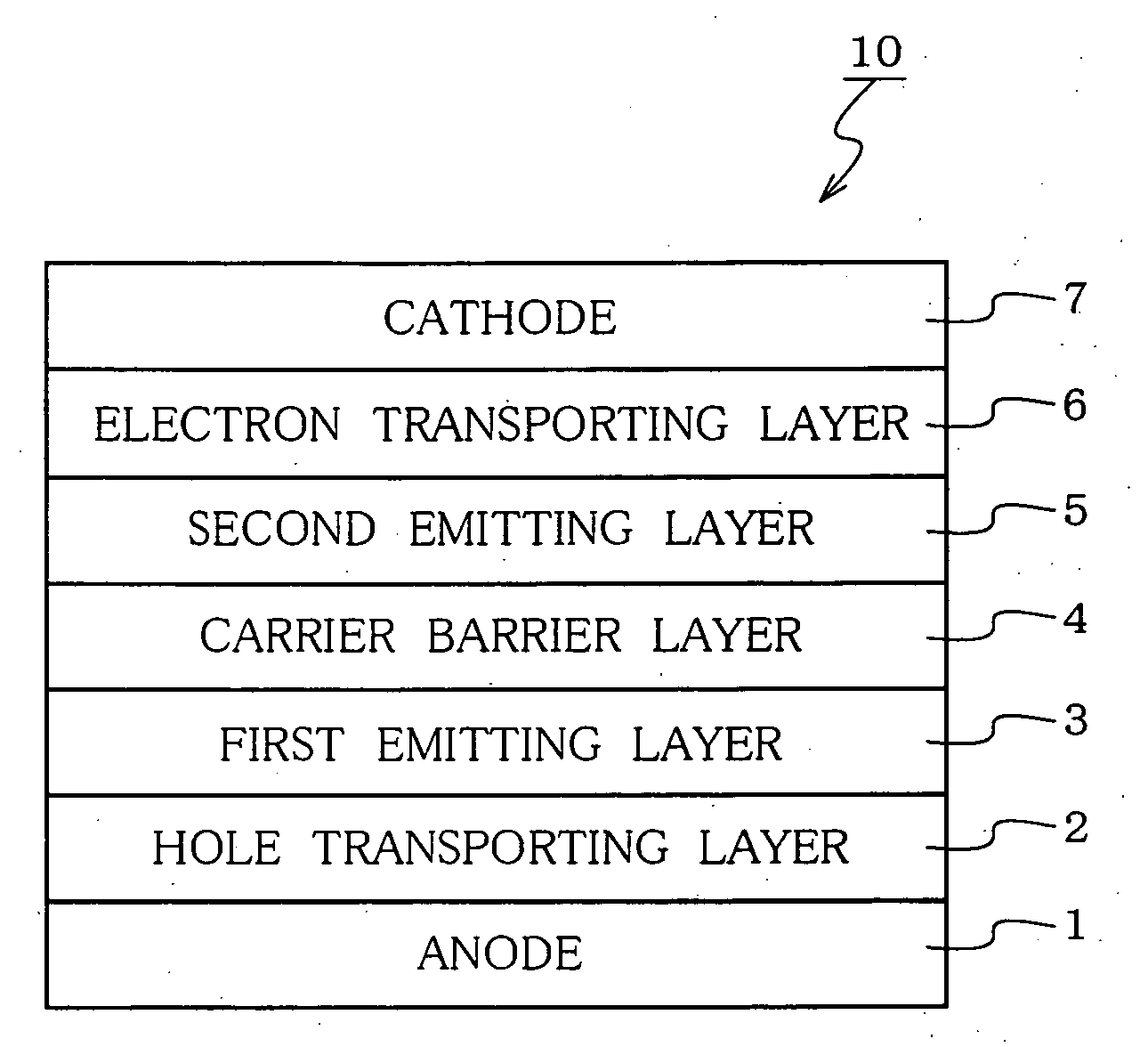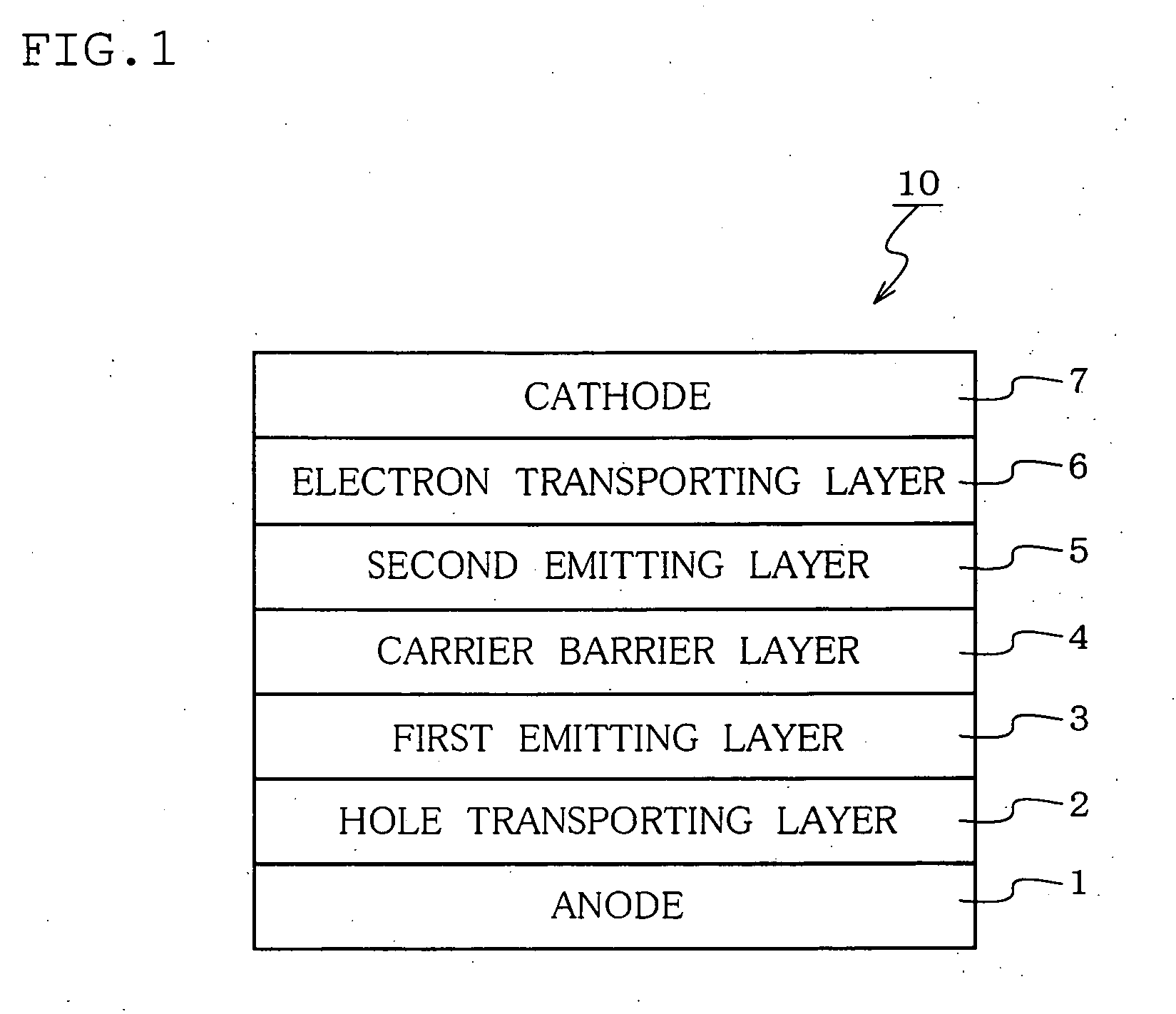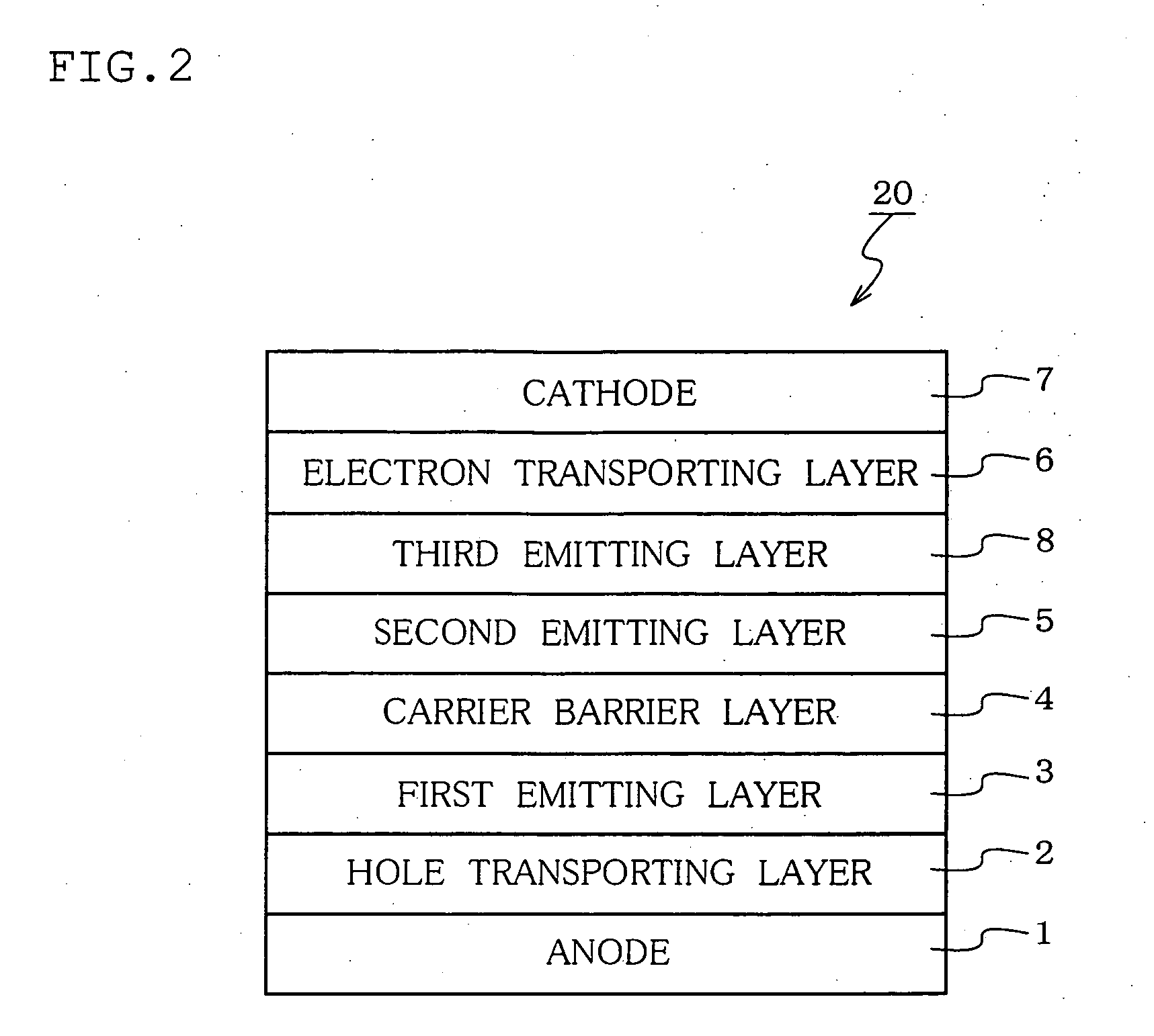Organic electroluminescence device
an electroluminescent device and organic technology, applied in triarylamine dyes, lighting and heating apparatuses, anthracene dyes, etc., can solve the problems of low emission intensity of the hole transporting red emitting layer, short life, and low driving voltage of organic el devices, etc., to achieve small chromaticity change, high luminous efficiency, and long life
- Summary
- Abstract
- Description
- Claims
- Application Information
AI Technical Summary
Benefits of technology
Problems solved by technology
Method used
Image
Examples
example 1
(Fabrication of Organic EL Device)
[0245]A grass substrate of 25 mm by 75 mm by 1.1 mm thick with an ITO transparent electrode (anode) (GEOMATEC CO., LTD.) (thickness of ITO was 130 nm) was subjected to ultrasonic cleaning with isopropyl alcohol for 5 minutes, and cleaned with ultraviolet rays and ozone for 30 minutes. The resultant substrate with transparent electrode lines was mounted on a substrate holder in a vacuum deposition device. First, an HI film was formed in a thickness of 60 nm so as to cover the surface of the transparent electrode on which the transparent electrode lines were formed. This HI film functioned as a hole-injecting layer. After forming the HI film, an A-11 film was formed in a thickness of 15 nm on the HI film. This A-11 film functioned as a hole-transporting layer.
[0246]Following the formation of the A-11 film, RH and RD were deposited to a thickness of 5 nm to form a first emitting layer such that the concentration of RD was 0.5 wt %. The first emitting l...
example 2
[0250]An organic EL device was fabricated in the same way as in Example 1 except that after forming the second emitting layer in a thickness of 10 nm, as a third emitting layer, BH and GD were deposited to a thickness of 30 nm to form a green emitting layer such that the concentration of GD was 10 wt % and then the Alq3 layer (electron transporting layer) was formed. The organic EL device obtained was measured in the same way as in Example 1. The results were shown in Table 1.
example 3
[0253]An organic EL device was fabricated in the same way as in Example 2 except that as the carrier barrier layer, an A-2 film was formed instead of the A-11 film in a thickness of 5 nm. The organic EL device obtained was measured in the same way as in Example 1. The results were shown in Table 1.
PUM
 Login to View More
Login to View More Abstract
Description
Claims
Application Information
 Login to View More
Login to View More - R&D
- Intellectual Property
- Life Sciences
- Materials
- Tech Scout
- Unparalleled Data Quality
- Higher Quality Content
- 60% Fewer Hallucinations
Browse by: Latest US Patents, China's latest patents, Technical Efficacy Thesaurus, Application Domain, Technology Topic, Popular Technical Reports.
© 2025 PatSnap. All rights reserved.Legal|Privacy policy|Modern Slavery Act Transparency Statement|Sitemap|About US| Contact US: help@patsnap.com



